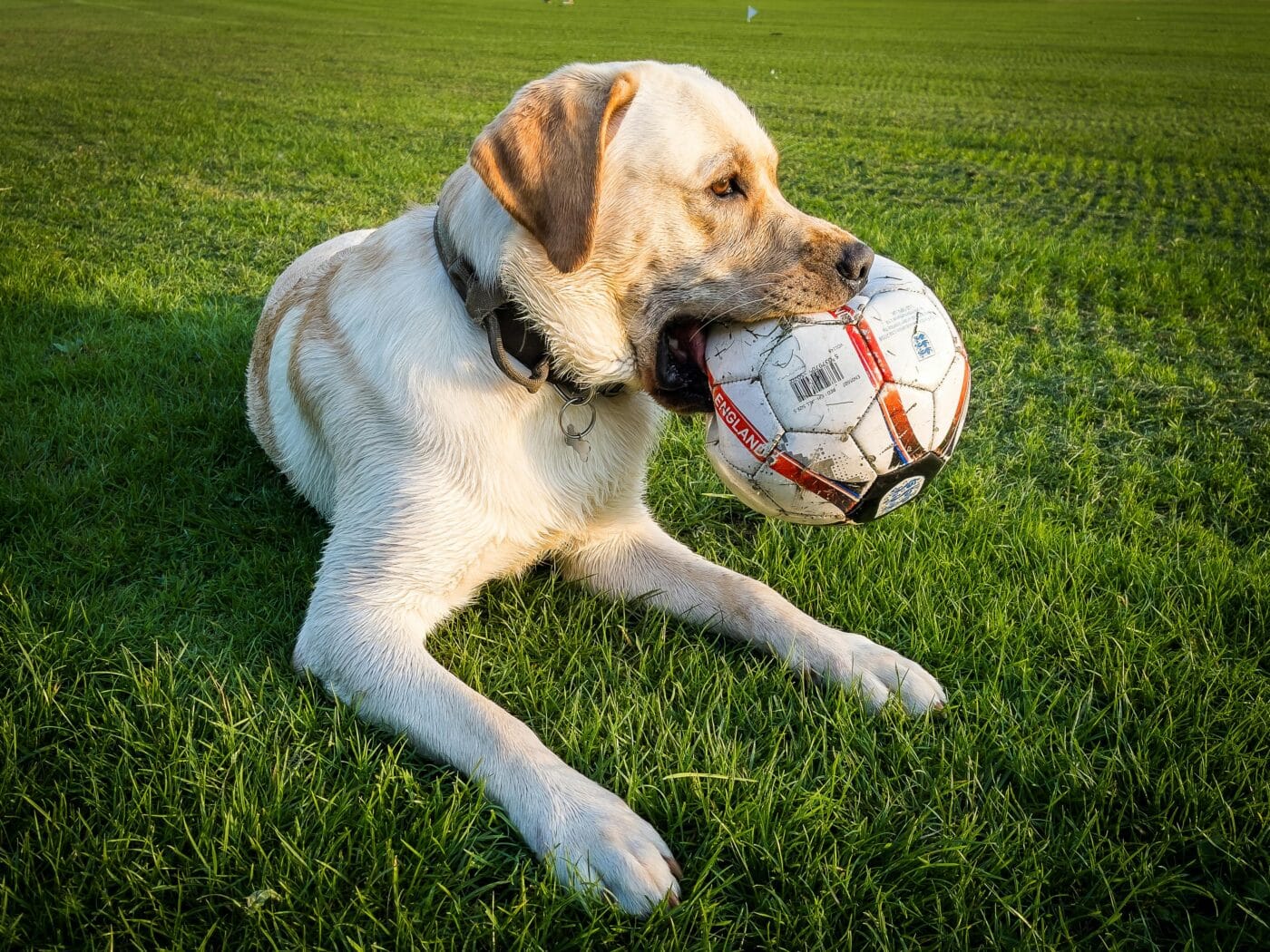 Shutterstock
Shutterstock
If you’ve ever watched a dog chase a ball with laser-focused determination, you know it’s more than just a game—it’s a passion. Many dogs have an endless obsession with balls, whether it’s a tennis ball, a squeaky toy, or a simple rubber one. This fixation can turn playtime into hours of fun, leaving owners entertained and puzzled. But what makes these round objects so captivating to dogs? Understanding this obsession means exploring their instincts, breed-specific traits, and their love for interactive play.
The Hunting and Predatory Instinct
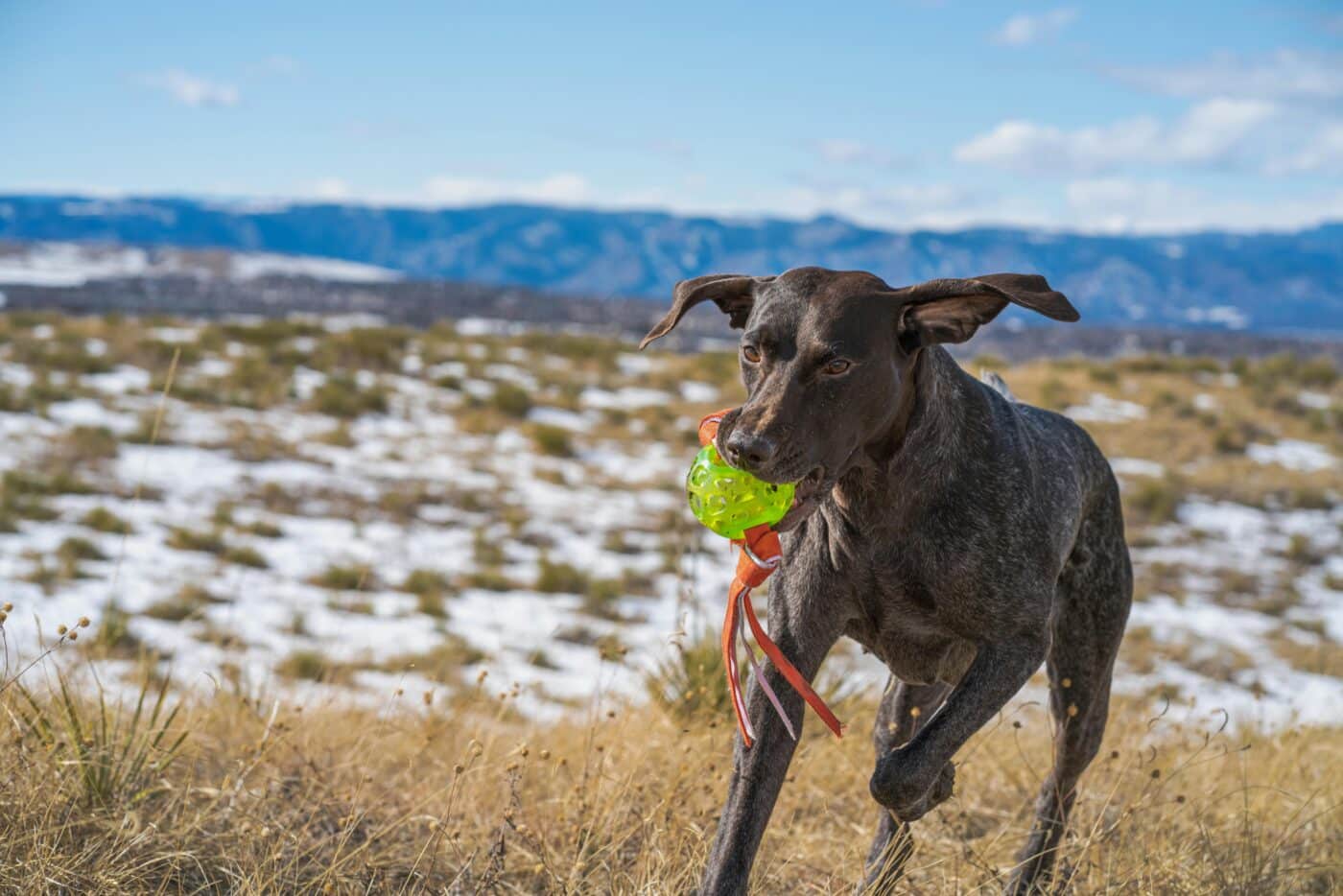 Shutterstock
Shutterstock
One of the main reasons dogs are obsessed with balls is due to their deeply ingrained hunting and predatory instincts. Dogs are descendants of wolves, and while domestication has altered many of their natural behaviors, the drive to chase and catch remains. A ball mimics the movement of prey as it rolls, bounces, and zigzags across the ground. This movement triggers a dog’s predatory sequence: eye, stalk, chase, grab, and shake. The thrill of the chase activates these instincts, making playtime with a ball both fun and mentally stimulating. The act of pursuing and capturing the ball taps into their evolutionary past.
The Joy of Fetch
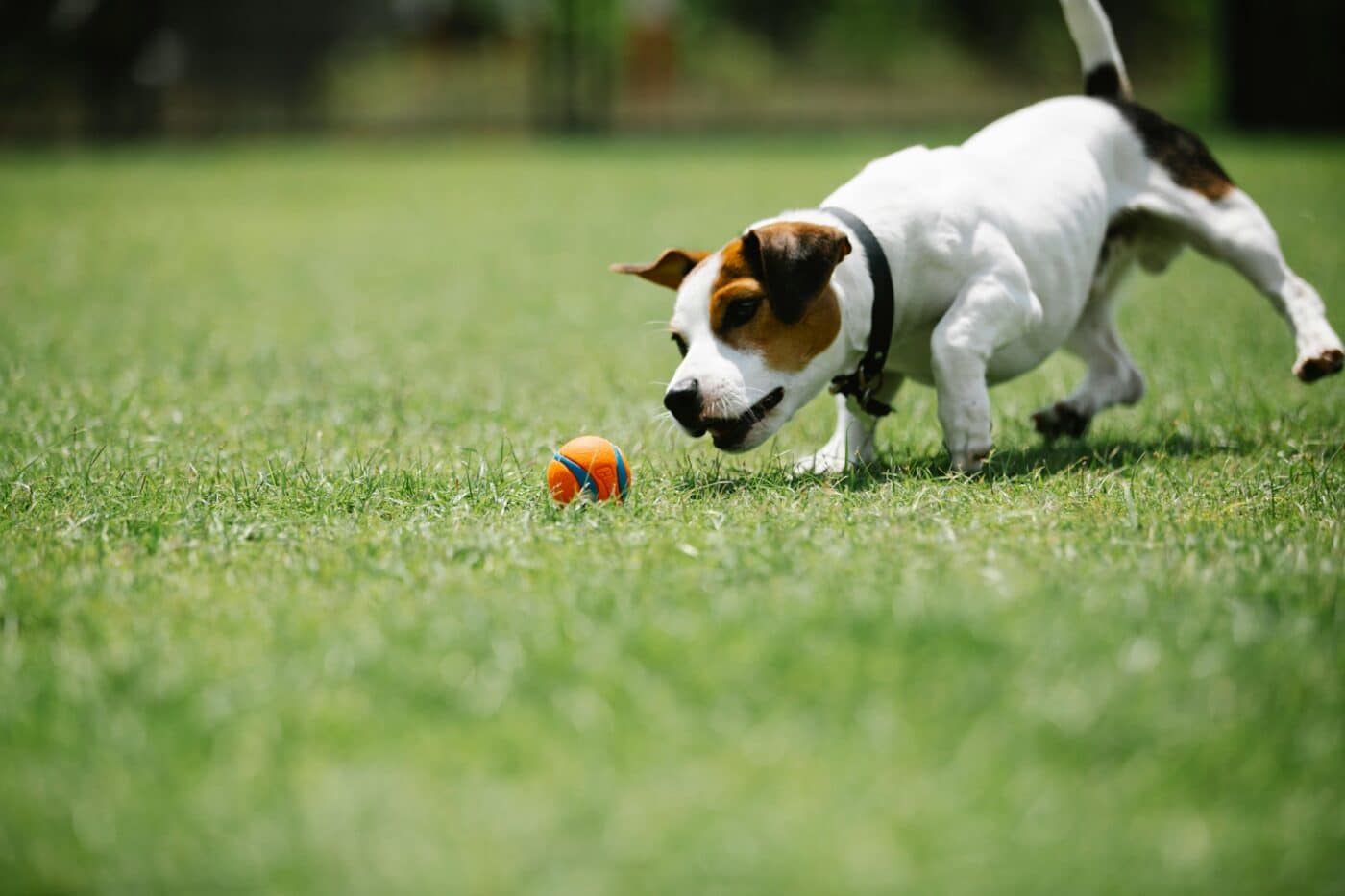 Shutterstock
Shutterstock
Fetch isn’t just a game; it’s a workout that satisfies both a dog’s physical and mental needs. The repetitive motion of running after a ball and bringing it back allows dogs to expend pent-up energy while engaging their minds. For many dogs, the game becomes addictive due to the cycle of action and reward. Each time they successfully retrieve the ball and bring it back, they receive positive reinforcement in the form of praise, petting, or another throw. This creates an enjoyable loop where the dog feels accomplished and rewarded, fueling their desire to continue playing.
Breeds with a Natural Affinity for Balls
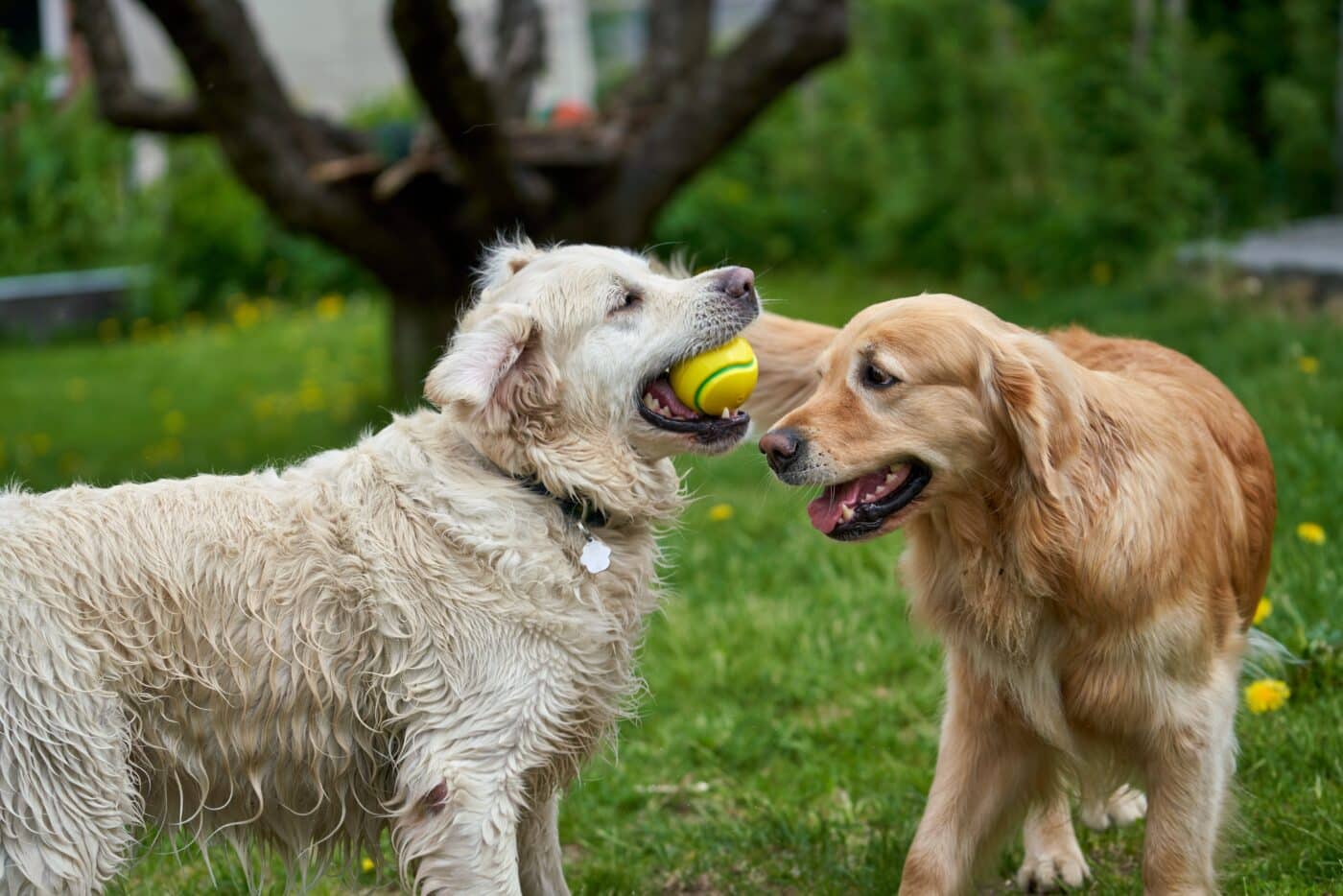 Shutterstock
Shutterstock
Certain breeds are more inclined to develop a ball obsession due to their history and genetics. Sporting and working breeds, like Retrievers, Border Collies, and German Shepherds, often show a higher interest in playing with balls. Retrievers, for example, were bred to fetch games during hunts, so their love of carrying and retrieving objects is in their DNA. Border Collies and other herding breeds have high energy levels and intelligence, making them more likely to enjoy activities that involve problem-solving and physical movement, like chasing and catching balls. These dogs are essentially wired to love a good game of fetch.
The Role of High Energy Levels
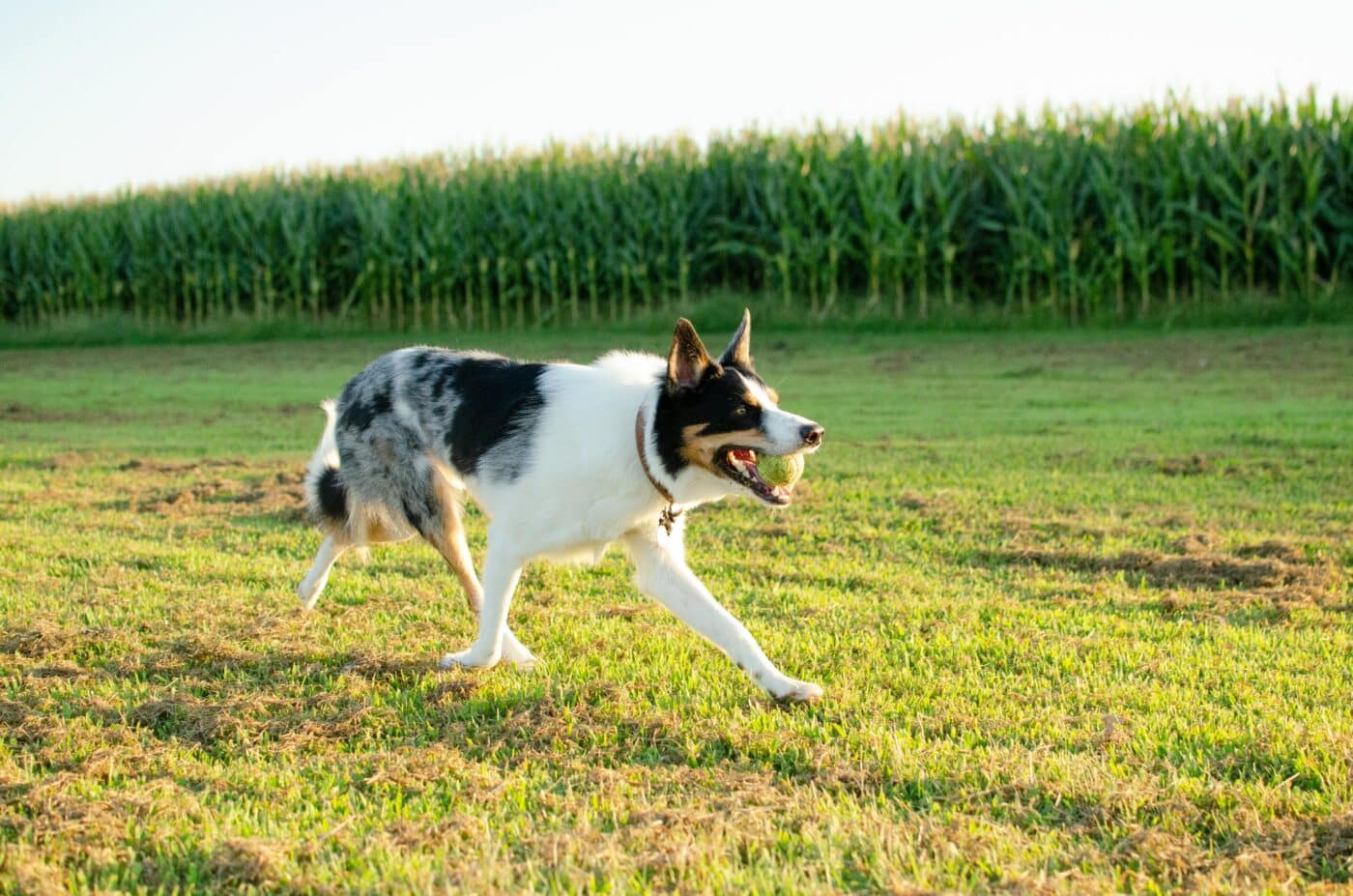 Shutterstock
Shutterstock
Dogs with high energy levels need an outlet to burn off their extra zest for life. For these dogs, playing with a ball is the perfect combination of exercise and mental stimulation. High-energy breeds, like Labrador Retrievers, Jack Russell Terriers, and Australian Shepherds, are known for their boundless enthusiasm and constant need for activity. When given the chance to chase a ball, these dogs can play for what seems like forever. This type of play helps manage their energy and prevent the development of destructive behaviors that can arise when they’re bored or under-stimulated.
The Bonding Element of Ball Play
 Shutterstock
Shutterstock
Playing fetch or catch isn’t just about the chase; it’s also a bonding activity between dogs and their owners. Dogs are social animals that thrive on interaction with their human companions. When you throw a ball and engage in a game of fetch, your dog associates you with fun and positive experiences. This strengthens your bond and boosts your dog’s happiness. The time spent together during play helps reinforce trust and deepens the relationship, making them look forward to more play sessions. For many dogs, the ball itself becomes a symbol of shared joy and companionship.
The Satisfaction of a Job Well Done
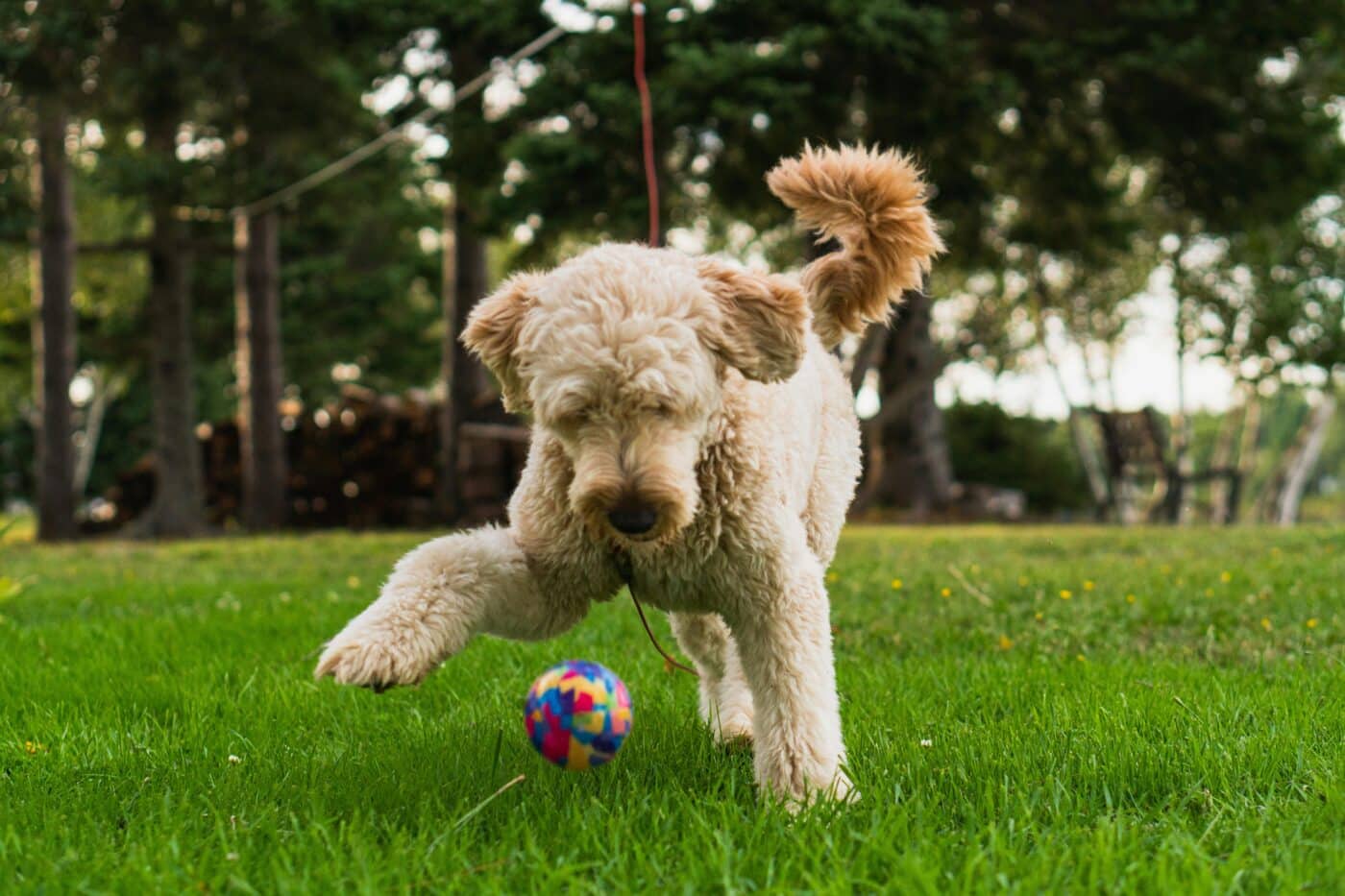 Shutterstock
Shutterstock
Some dogs are motivated by the satisfaction of completing a task, and fetching a ball perfectly aligns with this mindset. Dogs with a strong “work ethic,” like Collies or Belgian Malinois, thrive when they have a job to do, even if it’s as simple as retrieving a ball. This sense of purpose can make them obsessed with the activity. Each time they bring the ball back, they feel a sense of achievement. The repetitive nature of fetch provides a clear task-and-reward cycle that satisfies their instinct to work and achieve goals, making them eager to repeat the experience.
Balls as Mental Stimulation
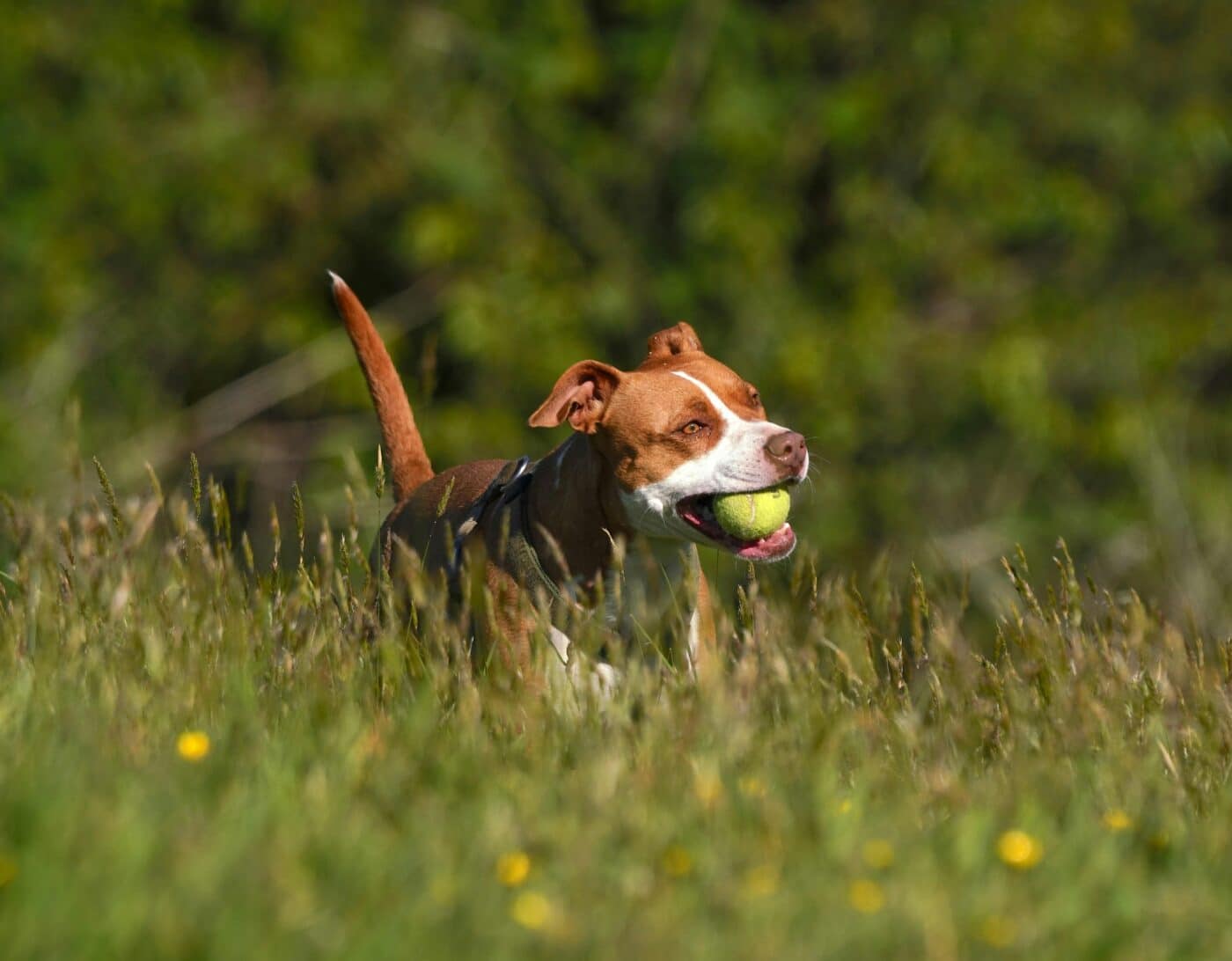 Shutterstock
Shutterstock
Dogs are intelligent creatures that need mental challenges to stay sharp and happy. Playing with balls can provide a level of problem-solving that keeps them mentally engaged. For example, trying to predict the ball’s movement, catching it mid-air, or outsmarting it when it bounces erratically can be a stimulating challenge for a dog. This mental exercise helps keep their brains active and can prevent cognitive decline in older dogs. Engaging with a ball provides not just a physical workout but also a mental one, adding to its appeal and contributing to the obsession.
The Sensory Experience
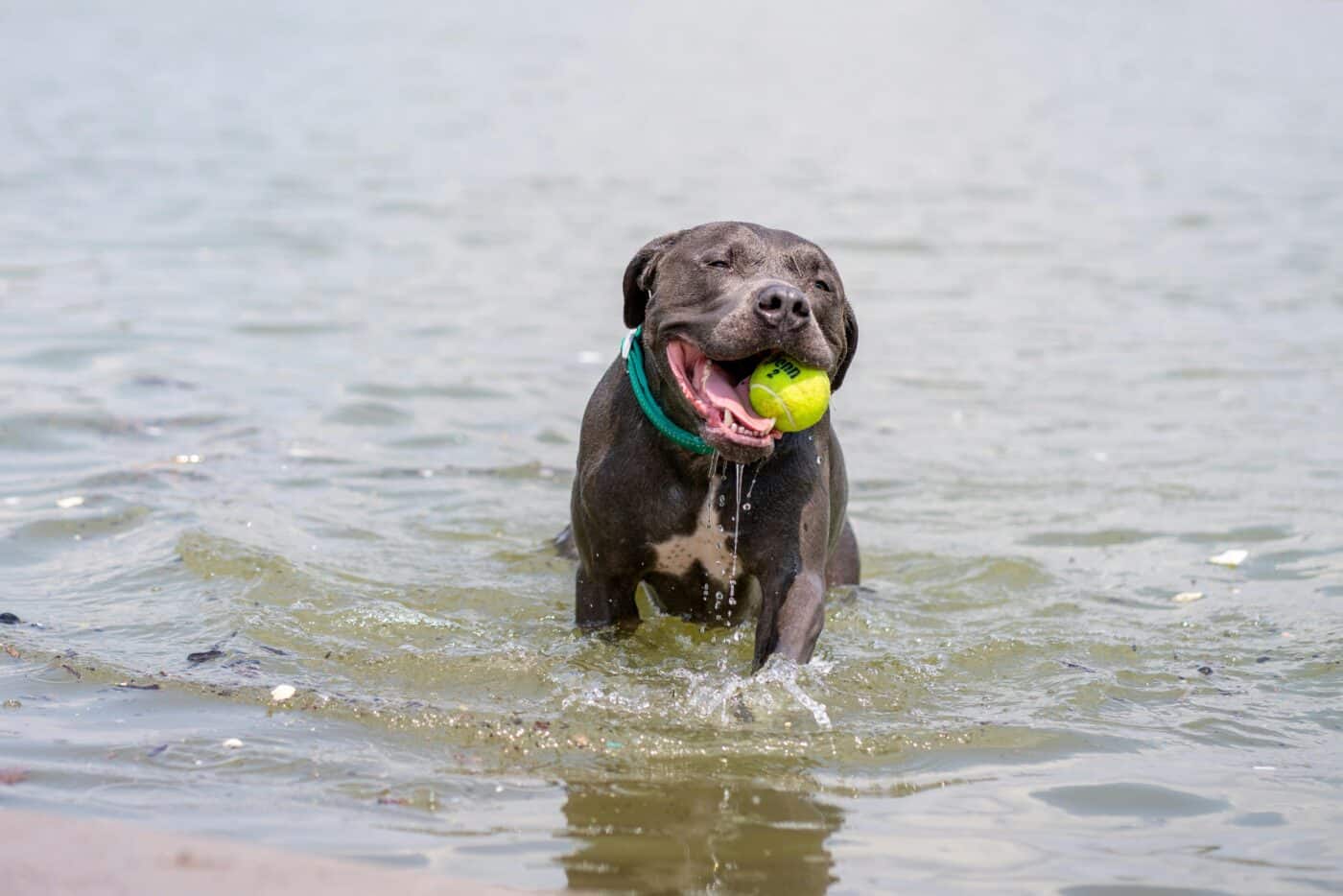 Shutterstock
Shutterstock
The sensory experience of playing with a ball is another reason dogs are so drawn to it. Balls come in different textures, sizes, and materials, and dogs enjoy exploring these variations with their mouths. The feeling of the ball’s texture, whether it’s a soft tennis ball or a squeaky rubber toy, provides tactile stimulation. Dogs also use their powerful sense of smell to engage with the ball, especially if it’s been handled by their favorite human or has been outside where it picked up different scents. This multi-sensory experience keeps them interested and excited during play.
The Adrenaline Rush
 Shutterstock
Shutterstock
Just like humans get an adrenaline boost from exciting activities, dogs experience a similar rush when playing with balls. The moment you throw the ball, your dog’s body releases a burst of adrenaline, giving them a jolt of energy and excitement. This rush is part of what makes the game so addictive. Each chase triggers this burst of energy, creating a cycle that makes dogs want to keep playing. The act of sprinting after the ball and catching it provides them with a burst of joy that keeps them coming back for more.
The Comfort of Routine
 Shutterstock
Shutterstock
Dogs are creatures of habit and love a good routine. If playing with a ball has become part of their daily activities, they’re likely to develop an attachment to it. This routine provides a sense of security and predictability that dogs crave. For many dogs, the simple act of playing fetch becomes as comforting as their mealtime or daily walk. When a ball is introduced as a regular part of their playtime, it becomes a symbol of fun and familiarity, making it one of their favorite activities to look forward to each day.
Training and Reinforcement
 Shutterstock
Shutterstock
Dogs that have been trained to fetch or engage in ball games may develop a heightened interest in them. This is because training often involves rewards, like treats or praise, that reinforce positive behavior. When a dog learns to fetch a ball and is rewarded for it, they associate the ball with good things. The combination of training, positive reinforcement, and the inherent fun of the activity creates a powerful motivator. As a result, dogs may become obsessed with the ball because it represents a task they know well, enjoy, and get rewarded for.
Obsession or Healthy Play?
 Shutterstock
Shutterstock
While many dogs show a healthy enthusiasm for playing with balls, it’s essential to know the difference between healthy play and obsession. For most dogs, ball play is a great way to exercise and have fun. However, for some dogs, the line between playful enthusiasm and obsession can blur. If your dog becomes overly fixated, showing signs of stress when the ball isn’t available or refusing to engage in other activities, it may be time to take a step back. Diversifying their play routine and incorporating other toys or games can help keep their interests balanced.
The Ball Stops Here (But Not Really)
 Shutterstock
Shutterstock
Dogs and Balls—it’s a love story as old as time. Whether it’s their primal instincts, for exercise, or the sheer joy of bonding with their human, dogs have a million reasons to be obsessed with these round wonders. While it’s fun to watch them chase and retrieve with unmatched enthusiasm, maintaining a healthy balance ensures that their love of ball play stays joyful and stress-free. After all, when it comes to dogs and their beloved balls, life’s too short not to enjoy every bounce and fetch to the fullest!
 Toledo, United States.
Toledo, United States.